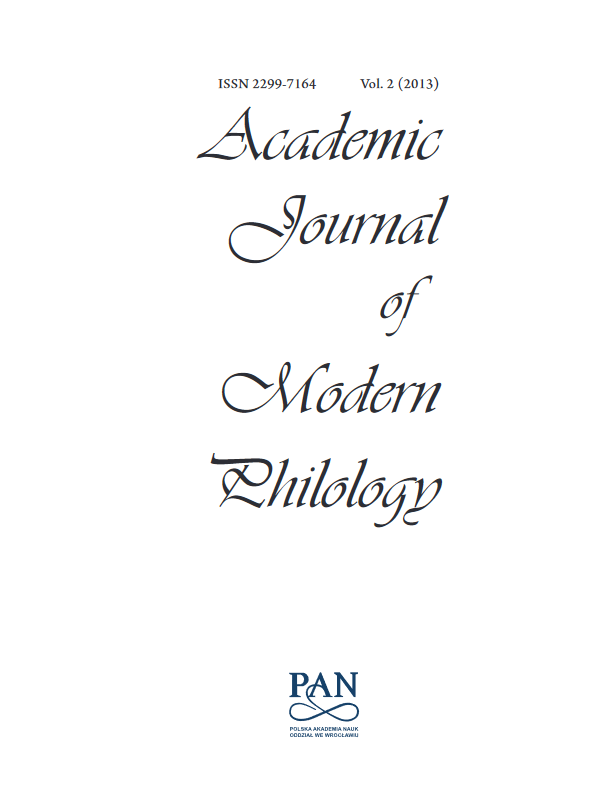Das Beschreibungsmodell deutscher und dänischer Derivate nach ihrer Prädikat-Argumentstruktur
The Classifi cation Model of German and Danish Derivatives According to Their Predicate-Argument Structure
Author(s): Janusz StopyraSubject(s): Language and Literature Studies, Theoretical Linguistics, Syntax
Published by: Komisja Nauk Filologicznych Oddziału Polskiej Akademii Nauk we Wrocławiu
Keywords: German and Danish derivatives; predicate-argument structure; systemic traits of vocabulary; word formation system
Summary/Abstract: The following article seeks to present the model of classification of German derivatives which can be traced to both Fillmore’s The Case for Case (1968) and the German formative description proposed by Hans Wellmann from 1984 to 1998 (Duden. Die Grammatik, Band 4). The model seems to remain in conformity with the rule of aligning semantic fields to particular parts of sentences. The particular rule applied for German language was formulated by Wolfgang Motsch (2004). Renata Grzegorczykowa and Jadwiga Puzynina (1999) applied the rule in their analysis of the Polish word formation system. The fundamental role of the model is to classify each and every occurrence of the derivatives in accordance to both their semantic role and the directly motivating sentence segment of an explicative phrase. Derivatives set in such classes can be additionally classified in accordance to the specified suffixes. The discussed model allows systemizing the results of word formation of a particular language. The model enables distinguishing systemic traits of vocabulary, therefore providing the learner with a specific overview and a greater degree of transparency. While considering German and Danish languages, it can be concluded that the Danish word formation system remains in conformity with its German counterpart and is equally complicated in its nature. Danish derivational translating equivalents comprise 65% of Danish equivalents in the following study.
Journal: Academic Journal of Modern Philology
- Issue Year: 2013
- Issue No: 2
- Page Range: 145-152
- Page Count: 8
- Language: German

